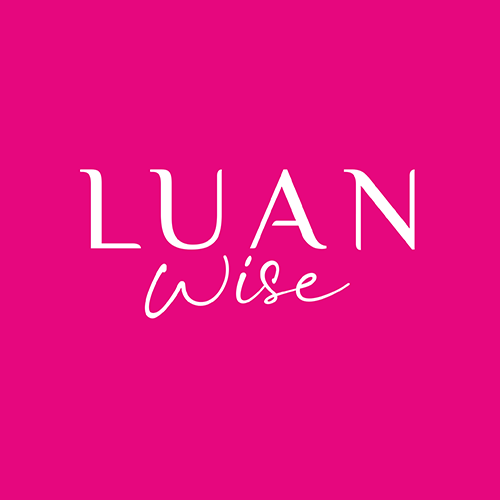When lockdown began, I followed my own advice to stay visible among my network. I also took the opportunity to catch up with my marketing peers and even convinced some of them to go live on LinkedIn and share some of our dialogue with the wider world!
Not only did I enjoy these conversations, but in both the preparation and the live sessions I was able to reflect on the value of my network, how we had met, and the relationships we have built over many years.
Thanks again to Leigh Hopwood, Bryony Thomas, Professor Jonathan Deacon, Dave Stevens, Penny Eccles, Asif Choudry, Sarah Bryars, Dr Jenny Lloyd and Kelly Vickers for taking part!
If you didn’t see the sessions live, a playlist with all the recordings is available on my YouTube channel, here.
My best attempt to summarise the highlights over three hours of video is below. We did use the word unprecedented! There were some common themes around the importance of marketing fundamentals and getting the basics right, and I think we all realised the importance of having authentic conversations and sharing how we’re all doing as we navigated the changing world week-by-week. Staying connected and learning together.
My first guest was Leigh Hopwood, vice-chair of the Chartered Institute of Marketing, and since we spoke is now CEO for the Call Centre Management Association (CCMA).
Leigh and I discussed how customers have been telling us for years to be more agile and how it’s taken a global pandemic to finally show marketers that we need to listen to our customers and that we can be agile when we need to be!
In light of the marketing challenges ahead Leigh shared her thoughts that organisations need to be a lot more creative and used the phrase ‘flexibility within a framework’ to describe the ongoing agility we need as part of our marketing planning processes. You need a goal, strategies to get there, and then tactical action plans that can be adapted and nuanced within the world that’s changing around us. We also couldn’t help but talk about the importance of good marketing training, going back-to-basics with traditional tools such as SWOT, PEST and Porter’s Five Forces, as the best people to get organisations through a crisis is, we believe, the qualified marketers. For marketers, the confidence that comes from good training is also critical.
Author of Watertight Marketing, Bryony Thomas, talked about the recent release of the second version of the book – available from Amazon – and the importance of adapting academic marketing models and case studies from giants such as Coca Cola and Apple to be practical and relevant for smaller businesses.
At the beginning of the book, Bryony uses a great phrase about ditching marketing FOMO (fear of missing out) which is based on Bryony’s thinking that nobody ever struggles to think of more ways to spend money on marketing.
We talked specifically about one of the ‘leaks’ in the methodology that’s particularly important and a great ‘quick win’ for the current climate – no gateway product. Having a simple entry product such as a diagnostic tool or quiz-style download is a great way to start a valuable conversation with someone and take them towards the next step of a monetized product.
Professor Jonathan Deacon from the University of South Wales shared a coffee analogy – that the quality of a cappuccino is based on the quality of the espresso that sits at the bottom. Lots of new marketing ideas become the frothy milk part of the cappuccino, but what’s really important is that the marketing fundamentals do not change – the espresso part of our coffee is the foundation of what we all do.
The espresso is made up of six things (that all marketers need to know):
- Marketers need to have an understanding and real interest in the psychology of the individual that buy from us, and why they buy
- We also need to understand something about sociology; about the group, how people come together, and how influence works.
- Anthropology as the study of culture and people and the importance of connectivity around the global
- An understanding of economics and how the economy has changed, including behavioural economics
- What does strategy mean? Over the past few years we’ve seen a switch to a softer approach to strategy which includes communication connectivity, collaboration, and working with competitors delivering a better value outcome for our communities, driven by social good.
- Finally, creativity. The great American advertising creative director Bill Bernback said “Creativity will become the last unfair advantage we’re legally allowed to take over our competitors.”, and this is still true today.
With Dave Stevens, Chair and Co-Founder of the Business Marketing Club (BMC), we talked about the challenge of taking face-to-face events online and while reach has extended globally, it’s important that the regional characteristics and requirements for events do not get lost.
The BMC has been hosting weekly webinars focused on how the Coronavirus crisis has affected B2B marketing and Dave shared how the content has changed over the weeks to reflect the distinct phases that we’re working our way through. The first phase, which lasted around eight weeks, was one of shock and fear. Not knowing the answers and not knowing whether customers were going to continue to buy meaning business had to respond with changing marketing messages and also changing channels to market – direct marketing was no longer available because people were not in their offices, and digital channels have become cluttered as everyone jumped on the video, webinar, and social media bandwagon. Phase two – at the time we spoke, with lockdown starting to ease – sees ‘maintenance’, with some business opportunities still in the funnel awaiting conversion but a much clearer focus on brand and trust building than lead generation. We look forward to the next phase of recovery.
Penny Eccles, strategic marketing consultant for the higher education sector, and I spoke about the importance of marketing planning, and how to avoid diving straight into tactics. We shared how the visible part of our role is often the production of a website, brochures and flyers yet we don’t get to show how much thinking goes into their creation.
As marketing budgets are often cut during hard times, it’s even more important right now to be showing value and demonstrating how everything we do is based on evidence, and we do that by asking the right questions before diving in and asking practical questions about the specific details that need to be included on the flyer! We need to adopt an objectives first mentality, set clear KPIs, and focus on the measurements that really matter. We also need to know our superpowers and recognise the work we do as marketers behind the scenes!
Penny also shared a secret, and that’s to allocate a very small proportion of your marketing budget for ‘vanity’ items – for the things you don’t want to do, but need to do to engage your stakeholders – such as a 48 sheet poster that’s on a director’s commute to work!
I first met Director of Resource, Asif Choudry, as the result of a LinkedIn article – which led to speaking opportunities at four live events!
#CommHero is an amazing example of a marketing campaign that has excelled due to a community, built on Twitter. The live events are a real celebration of work and industry collaboration, all facilitated by Resource, and originally just an idea to be tested!
Six years later there’s over 10,000 active followers, and an e-commerce shop of #CommsHero branded merchandise. The key to success: a commitment to the community, consistent posting, and real-time engagement.
I have worked with Sarah Bryars, CEO for Target PR, and the team for a number of years and so it was good to hear how valuable Sarah had found watching earlier lives before joining me.
We talked about the importance of having a clearly defined purpose for both ourselves and our businesses. Sarah shared her thoughts on how businesses who have a clear focus and direction by means of a common purpose has played a key role as we have paused to reflect on what’s happening, think about how we can be useful in the current situation, and also valuable in keeping teams together when working remotely from home. We also talked about the importance of trust, and how just like communicating purpose, it’s not a one-hit message that happens overnight!
Dr Jenny Lloyd and I talked about virtual learning experiences during the lockdown. It was really interesting to hear and compare the challenges faced by universities with the increasing trend for online learning content, both live and pre-recorded. We talked about the challenges of delivering content online, as well as the wider learner experiences (not just presentations). We discussed how lockdown has forced many changes, that have perhaps been under consideration for a while – with both positive outcomes and more thoughts for what the future of blended learning could look like.
Finally, my first boss Kelly Vickers joined me to reflect on 20+ years working in marketing, before social media existed! We talked about our roles, where our careers paths have crossed, and the value of having spent time working within an agency. Kelly started a new job during the lockdown and shared her experiences of managing a new team at a distance. The session ended with a note about the value of networks – as not only was Kelly my first boss, she also referred my first clients when I set up my own consultancy business.
What is LinkedIn Live?
The LinkedIn Live feature allows individuals (from a personal profile) and organisations (from a Company Page) to broadcast live video content to their network.
As a LinkedIn Learning course instructor I was given early access. You can apply to become a LinkedIn Live broadcaster, here.
Going live on LinkedIn means using a third-party tool – I used StreamYard. If you want to be able to download your broadcasts, for example to add to YouTube, you will need to pay for a basic subscription ($20/month).
LinkedIn Lives cannot be scheduled, so I found it useful to post ahead of the live, and on the morning of the live to let my connections and followers know my plans.
When you go live connections receive a notification, and to view you need to go to the LinkedIn profile (lives can also be streamed via a company page).
The guidelines for going live on LinkedIn, include:
- No selling or promotional streams.
- No pre-recorded content. All streams should be live and happening in real time, or you may confuse members and potentially betray their trust.
- No live streams shorter than 10 to 15 minutes because there won’t be enough time for the audience to increase and interact.
- No meta streams. Avoid talking about how to use LinkedIn on LinkedIn.
- Avoid sponsor logos that dominate the video. If you must use sponsor graphics, keep them small.
- No long “starting soon” screens. Don’t keep your audience waiting for more than one or two minutes.
- No unprofessional streams. All live content is publicly visible and should be appropriate for a LinkedIn audience.

